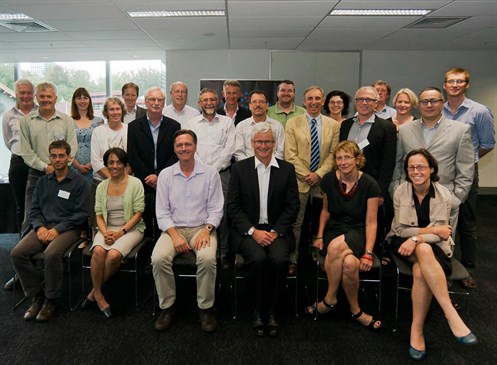Advancing a vaccine for rheumatic fever (2013)
In 2013 the Maurice Wilkins Centre hosted a symposium attended by world experts in rheumatic fever. It marked the start of a trans-Tasman collaboration to eliminate the disease by developing an effective vaccine.
 Rheumatic fever is a childhood disease that can damage the heart, causing rheumatic heart disease. Every year around 200 New Zealanders get rheumatic fever; mostly Maori and Pacific Island children, who suffer the disease at some of the highest rates seen elsewhere in the world.
Rheumatic fever is a childhood disease that can damage the heart, causing rheumatic heart disease. Every year around 200 New Zealanders get rheumatic fever; mostly Maori and Pacific Island children, who suffer the disease at some of the highest rates seen elsewhere in the world.
The symposium was organised after Prime Ministers of both New Zealand and Australia agreed to contribute equal shares of funding towards identifying a vaccine. Among the attendees were the developers of three leading vaccine candidates. The two-day gathering allowed research experts to review data on each of the vaccines and explore whether they would be suitable for target populations in Australia and New Zealand.
Rheumatic fever is caused by infection with the bacterium Group A Streptococcus, or GAS. MWC principal investigator, Professor John Fraser, an expert in the biology of this organism, says the symposium was attended by the “who’s who of GAS researchers”. This reflected the global connectedness and international credibility of the MWC.
The symposium focused “on whether a vaccine would work, and what the outstanding issues are to advance these vaccines into clinical trials. We need to develop a strategy to rapidly investigate, whether one, two or all three of the vaccines meet our criteria.”
Rheumatic fever is a key research focus at the MWC which is also funding research to understand how GAS infections cause rheumatic fever. Dr Nikki Moreland, also supported by a Heart Foundation fellowship, is studying the immune “fingerprint” of the disease. It is thought that antibodies directed at the GAS bacteria cross-react with the heart and cause rheumatic fever, but the nature of these antibodies, and exactly what they attack in the heart, is still unknown.
Other MWC researchers are investigating the biology of GAS bacteria. Studies led by clinical microbiologist Dr Deborah Williamson and researcher Associate Professor Thomas Proft, are defining key characteristics of the strains of GAS found in New Zealand.
“This information is really important for the vaccine efforts,” says Nikki. “The vaccines under consideration have been developed based on what strains are circulating in the USA and Europe, so we need to understand what strains are here. It’s quite a dynamic bacterium, and strains vary in different geographical locations and at different points in time.”
Through this combined approach – increasing fundamental knowledge of rheumatic fever, while also accelerating the progress of the most promising existing vaccine designs – the MWC aims to develop long-term solutions to one of New Zealand’s most damaging infectious diseases.
Feature image: World experts in group A streptococcus attended the MWC hosted symposium to advance development of a vaccine.
Image by Lydia Arnold